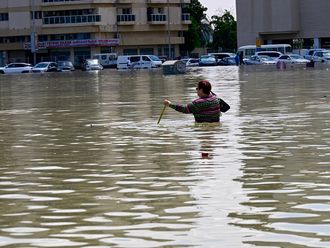ROME: Feeding a growing global population will become almost impossible if the world doesn’t take better care of its rapidly deteriorating soils, a humanitarian agency warned on Earth Day.
More than a third of arable land is already degraded because of soil erosion — the loss of the topsoil by wind, rain or use of machinery — as well as contamination of soil and city sprawl, according to Catholic Relief Services (CRS).
“If we don’t start to address the issue of soil erosion I don’t see how we can address the food security needs,” Lori Pearson, an agricultural adviser at CRS said.
Here are some facts on soils degradation and farming:
* Roughly 95 per cent of all food in the world is produced in soil.
* More than 35 per cent of ice-free land has been cleared of vegetation and converted to agriculture leaving soils more exposed to erosion and losses in soil carbon and nutrients.
* Earth’s soils contain more carbon than the planet’s atmosphere and vegetation combined.
* When land is overexploited or degraded, trapped carbon is released back into the atmosphere, resulting in planet warming emissions.
* It takes nature between 100 and 1,000 years to produce 1cm of soil, and if poorly maintained it can be lost in a single rainfall, or high wind.
* The world is currently losing soil 10 to 20 times faster than it is replenishing it.
* Each year 25 to 40 billion tonnes of topsoil are carried away by erosion.
* Crop losses to erosion could reach 10 per cent by 2050 — equivalent to removing roughly all the arable land in India from crop production — if no action is taken.
* With the global population set to reach more than 9 billion by 2050, food production must rise by about 60 per cent to generate enough for everyone to eat.
* Planting more lentils, chickpeas and other pulses can improve the health of the world’s soils.












